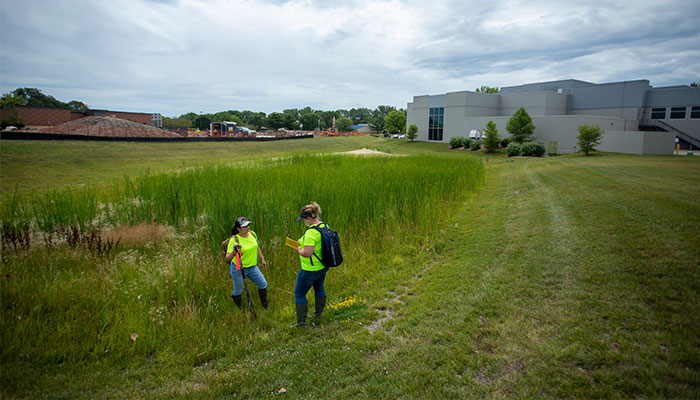
With the Trump administration pushing for heavy investment in infrastructure to stimulate the troubled economy – floating the possibility of a $2 trillion stimulus plan – now is the time for organizations of all sizes to start getting their list of projects ready so that they are better positioned when funds do become available.
But what does it mean to be “shovel ready”? What types of projects should you include on your list?
It might help to look at similar stimulus funding that happened only a decade ago.
HISTORY HELPS US PREPARE
During the Great Recession of 2008-2009, Congress passed the American Recovery and Reinvestment Act (ARRA), which included $48 billion in transportation infrastructure funds. Most of the funds were distributed through already-in-place grant programs, with Title XII of the Act requiring the U.S. Department of Transportation (DOT) to prioritize projects that could be completed within two or three years. In addition, states had 120 days to disperse half of their funds or see their dollars taken away.
Within six weeks of enactment, the DOT had already announced funding for around 2,000 transportation projects.
The reason for the haste was to get Americans back to work quickly. Iowa was able to fund 250 projects; Illinois 854; Indiana 1,125; and Nebraska 135. Many of these projects tended to be those already in advanced stages of planning, including repairs and improvements to roads, bridges and other infrastructure. In many cases, these projects had been needed and in planning for years, but were simply in need of funding before they could move forward.
CARES ACT
Congress’s focus in responding to the current COVID-19 pandemic has so far been on providing relief, mainly in the form of direct payments to individuals and small businesses. Phase Four of the CARES act is expected to pass in late May or early June, and could include investment in rural broadband to support schools’ distance learning and telemedicine. After Phase Four, it is expected that the legislature will turn its focus to recovery. It is important to note the speed at which Congress has been reacting to the crisis; an infrastructure bill could be passed as early as mid- to late summer.
STEPS TO TAKE
- Make a List: As an organization, one of the first things you should do is start making a list of all projects either in planning or on your future wish list. With tax revenues down and unexpected costs related to the pandemic, changes to budgets might have moved money away from capital improvement projects that were already in the works. These would be ideal projects to seek funding for.
- Rank Your Projects: Move “low-hanging fruit” to the top – those projects that can be completed the quickest. As seen with the 2009 ARRA, recovery involves getting people back to work as quickly as possible, so projects that can begin immediately will move to the front of the funding line.
- How Shovel Ready Are They? Figure out where each project is at in the planning stages and start removing obstacles. Does it need an environmental impact study or a traffic study? Have you calculated how much you think each project might cost? Do you have a preliminary design completed? The closer you can get to construction, the better your chances for funding. Work with a consultant experienced with existing funding streams and grant processes.
- Leverage Dollars: Look for ways to combine projects to get the most out of your funds and give you an edge when competing for funding.
- Be Prepared: Be prepared to supplement stimulus funds with local funding sources. Stimulus funds will probably be distributed through regular DOT or other grant programs, and some of these grants require local matches.
According to Transport Topics, even if stimulus money is not forthcoming, Congress is working to pass by September a new highway and infrastructure bill to replace the expiring FAST act. House Speaker Nancy Pelosi unveiled a plan in January that would follow a five-year, $760 billion policy blueprint that included $329 billion for highway programs; $105 billion for transit systems; $86 billion for investments in broadband; $60.5 billion for wastewater and other water infrastructure programs; and $55 billion for rail networks.
We will continue to monitor the situation and share with you what we learn. In the meantime,
watch our “Future Infrastructure Funding” webinar to get the latest on the CARES 2.0/HEROES Act and get an infrastructure outlook on the stimulus package, FAST Act reauthorization, appropriations and shovel ready.

